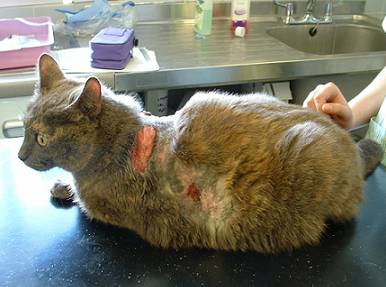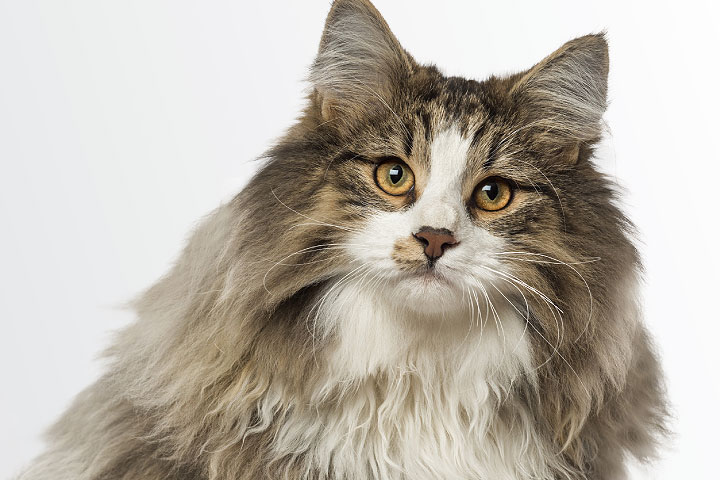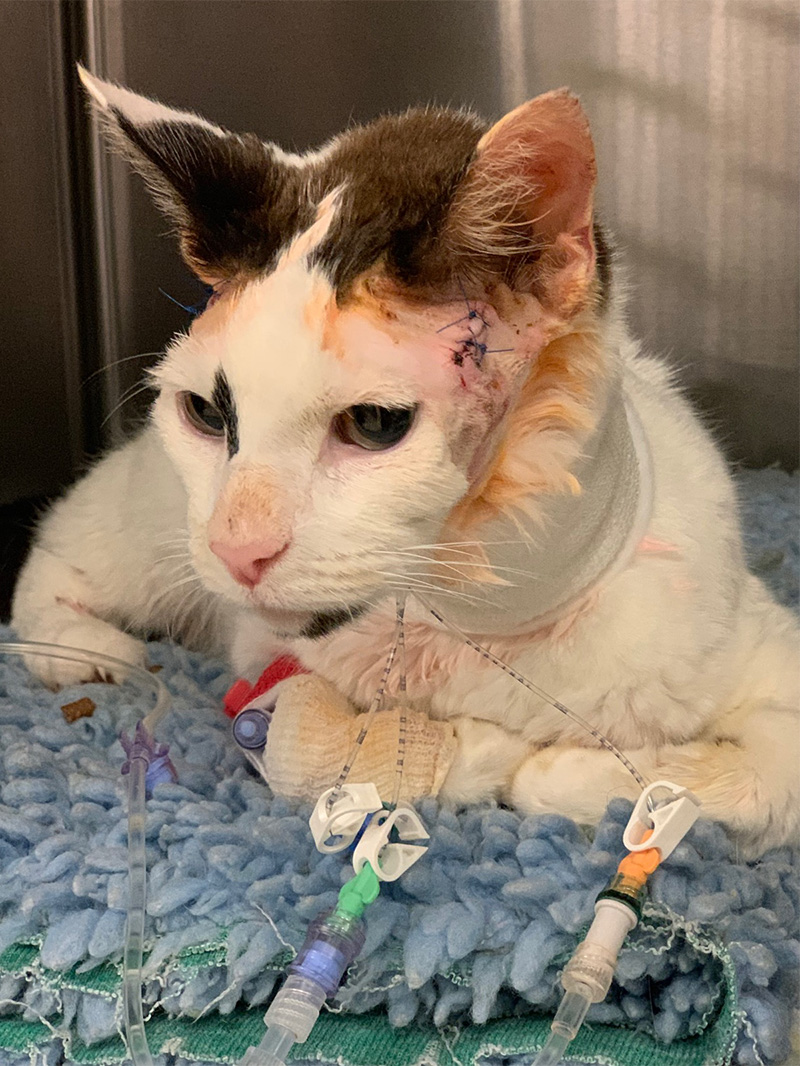acromegaly in cats uk
Most patients are insulin resistant although this may not be the initial presenting sign. Why view this webinar.

Acromegaly In Cats The Veterinary Nurse
Acromegaly is a relatively common cause of insulin resistance yet is a relatively under-diagnosed endocrinopathy.

. Similar to its etiology in people acromegaly in cats is the result of a functional adenoma of the pituitary gland that releases excessive growth hormone despite negative feedback1 ANATOMY AND PHYSIOLOGY Growth hormone is produced in an anterior lobe of the pituitary gland specifically by cells called somatotrophs. Its a rare disease but unfortunately it can become quite serious. Enjoy low prices on earths biggest selection of books electronics home apparel more.
This article describes the pathophysiology and diagnosis of acromegaly in cats and what treatment options are currently available. The veterinary nurse plays a key role in educating owners about acromegaly and the management of affected cats. The normal range is 2126 mmolL 88107 mgdL 4352 mEqL with levels greater than 26 mmolL defined as hypercalcemia.
Acromegaly is the clinical syndrome which results from this with the classic broad facial features prognathia inferior snoring and stertor due to excess tissue growth in the airways myocardial thickening and large paws. Ad Support your cat as they heal naturally with holistic vet-formulated remedies. Prevalence of acromegaly amongst diabetic cats in North America and the UK was found to be around 1 in 4 diabetic cats seen in primary practice.
Eighteen cats subsequently were examined and acromegaly was confirmed in 17 cats. It is more common in cats than dogs. Pathogenesis Etiology Pituitary neoplasia Pituitary gland.
Patient group Just like the normal non-acromegalic diabetic cat the acromegalic diabetic cat tends to be a middle-aged to older male neutered domestic short hair. It helps make kittens grow and helps maintain normal body structure in adults. This webinar will review key points about acromegaly and its relationship to diabetes to help nurses with an interest in nursing feline diabetic patients understand more about this fascinating disorder.
Most cats see their diabetes cured also with a return to normal numbers and insulin no longer needed. Acromegaly is a relatively rare hormonal condition. Notable findings included absence of a detectable pituitary mass lesion in some affected cats regardless of whether CT or magnetic resonance imaging MRI was used.
The origin of this alteration in cats is the presence of a tumor in the pituitary gland. Acromegaly is an endocrine disease caused by a tumour in the pituitary gland in the brain which secretes excessive amounts of growth hormone GH. Thirteen 93 of the cats were male and one was female.
In the following article well tell you more about acromegaly in cats. The medical term for acromegaly is hypersomatotropism. The disease is therefore likely currently underdiagnosed.
In this case series female cats 61 were predisposed and Siamese cats were significantly overrepresented. The tumour is usually benign and very slow growing. Affected cats can develop gradual changes in their appearance but because the disease develops over a.
So the cat is cured of Acromegaly once the tumour is removed. In addition improvement to some organs damaged by acromegaly may be seen especially concerning damage to the heart. Interestingly it can also affect the joints so arthritis symptoms can be seen.
Acromegaly is long-term excessive secretion of growth hormone GH from a tumor in the pituitary gland in the brain. This tumor is responsible for chronic over-production of growth hormones by the pituitary gland gh and igf-1 and in cats is typically characterized by gradual and permanent enlargement of bones such as the lower jaw bone gaps between teeth widening of the tongue large sized paws and unexplained weight gain although often acro cats have. 1 7 however these features appear gradually and often the only abnormality recognised in acromegalic cats is the presence of diabetes.
Acromegaly due to excessive hormone production in the brain is more common in cats than dogs. Prevalence of acromegaly amongst diabetic cats in North America and the UK was found to be around 1 in 4 diabetic cats seen in primary practice. Cats with acromegaly also seem prone to high blood pressure and rarely the tumour itself can grow so large that it causes changes in behaviour or other neurological signs.
In cats these tumors grow slowly and may be present for a very long time before you notice any changes in your cat. It can be caused by excessive hormone production in the brain or in mammary gland breast tissue. More recently the UK National Institutes of Clinical Excellence guideline recommended a 10-year risk score to determine statin allocation and in this case younger patients are likely to miss out on statins simply because of their low age.
The estimated prevalence of acromegaly in cats in the UK is between 1 in 800 to 1 in 1000. However with increasing case experience this signalment may change. This article describes the pathophysiology and diagnosis of acromegaly in cats and what treatment options are currently available.
In cats reported clinical features of acromegaly include prognathia inferior broad face enlarged paws hypertrophic cardiomyopathy abdominal organomegaly respiratory stridor and increased body weight. Neoplasia - large acidophil adenomas occasionally carcinomas secreting GH. The veterinary nurse plays a key role in educating owners about acromegaly and the management of affected cats.
Print off the owner factsheet on Acromegaly in cats Acromegaly in cats to give to your client. GH is responsible for regulating growth. The estimated prevalence of acromegaly in cats in the UK is between 1 in 800 to 1 in 1000.
The prevalence amongst non-diabetic cats is currently unknown although these cats would be expected to become diabetic in the long-run. Acromegaly is an endocrine disease consisting of hypersecretion of growth hormone GH. Hypersomatotropism HS is the excessive production of growth hormone GH by the pituitary gland.

Acromegaly In Cats The Veterinary Nurse

Hyperadrenocorticism Cushing S Disease International Cat Care

Pdf Acromegaly In A Non Diabetic Cat

Feline Acromegaly Endocrine System Msd Veterinary Manual

Acromegaly In Cats The Veterinary Nurse

Example Of A Cat Before And After Onset Of Hs Induced Changes Photo A Download Scientific Diagram

Woman Begs People To Stop Blaming Her For Her Fat Cat S Massive Size Metro News

Acromegaly In A Non Diabetic Cat

The Management Of Feline Hypersomatotropism Hs Acromegaly

Acromegaly In Cats The Veterinary Nurse

A 17 Year Old Male European Shorthair Cat At Time Of Presentation When Download Scientific Diagram
Qi Talk Forum View Topic Series J Episode 6 Joints

Pioneering Hypophysectomy Treatment Reaches 100 Case Milestone

Pioneering Hypophysectomy Treatment Reaches 100 Case Milestone

